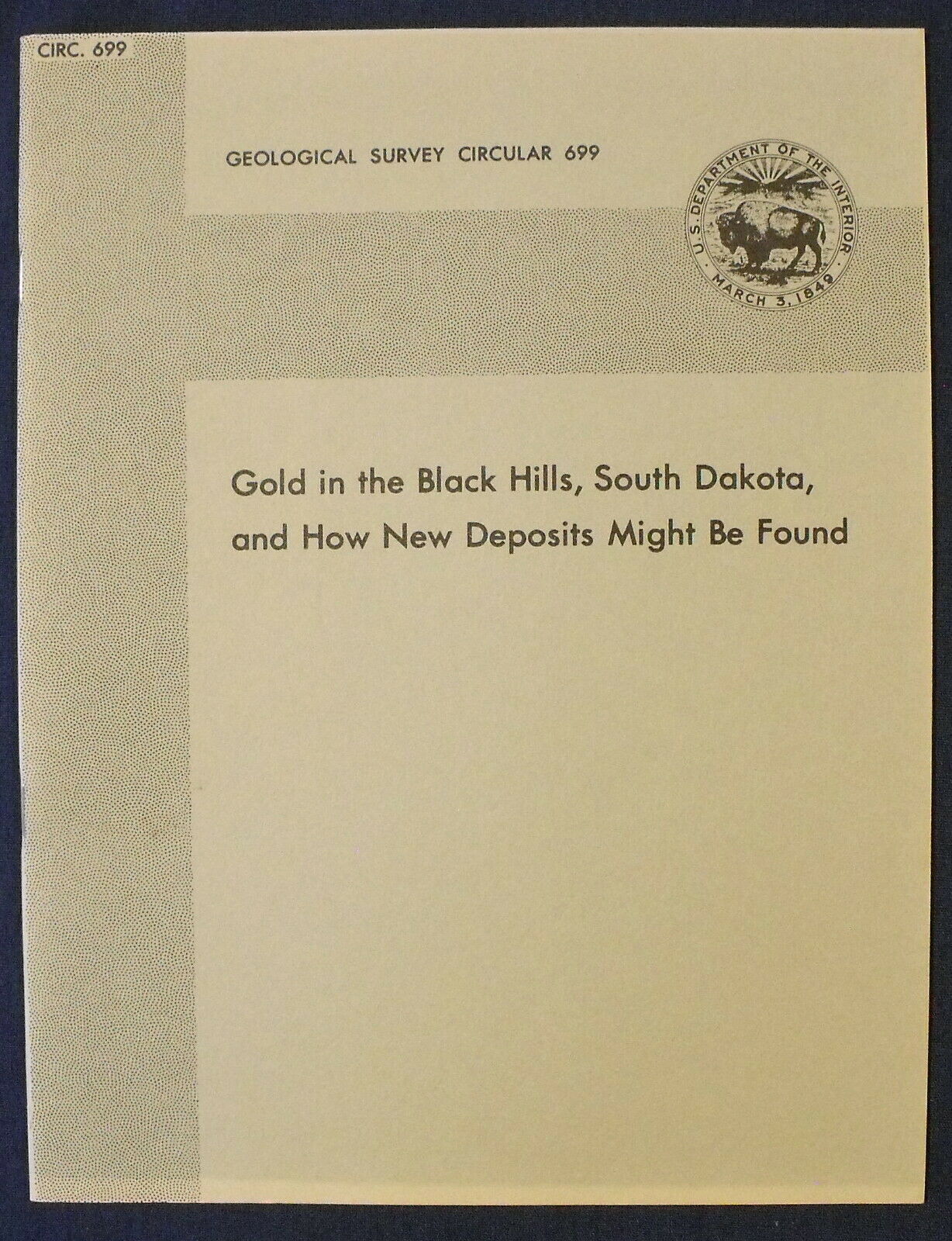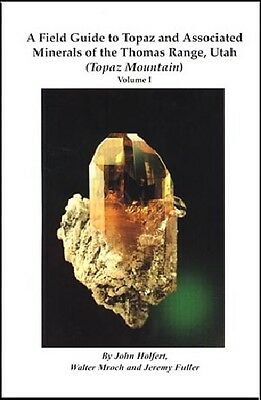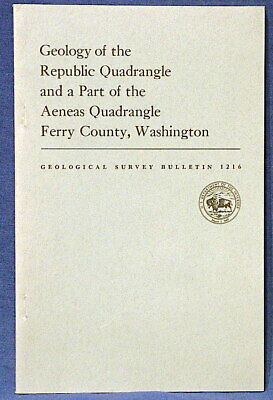-40%
USGS COLORADO, SOUTH DAKOTA IDAHO Lot of 7 Reports 1967-75 GOLD EXPLORATION
$ 6.33
- Description
- Size Guide
Description
Here is a nice set of reports on gold deposits, exploration, and geology in Colorado and South Dakota. Altogether there are 102 pages of text here. For one low price! The pictures are in the same order as the descriptions below. They are:USGS Circular 699,
Gold in the Black Hills, South Dakota, and How New Deposits Might be Found
, Published in 1974, there can’t be many of these around! This 22-page book provides a careful analysis of the gold deposits of the Black Hills, including the Homestake and deadwood deposits, with a view toward guiding exploration toward additional gold discoveries. This area had produced an astounding 34 MILLION OUNCES of gold by 1971, and if my memory is correct, produced an eventual 47 MILLION OUNCES by the time the Homestake mine finally shut down! Needless to say there was some serious gold moving around the region in the geologic past, and the chance to find the next big, or even small deposit was one that drove a lot of thinking about the geology of the region. One result was this publication that gives a concise analysis and clear recommendations for finding new gold. It is a scarce item and one that will always have relevance, as the area to explore is large and may have more than one deposit concealed within it. To my mind this has a lot of worth for its clarity and scope.
USGS Circular 707,
Anomalous Concentrations of Several Metals in Iron-Formation of the Blue Lead Mountain Area, Pennington County, South Dakota
. Published in 1975 this is a scarce item. This short book discusses the occurrence of GOLD, copper, silver, mercury, molybdenum, arsenic, zinc, and cobalt in an area of a few square miles that is delineated on maps in the book. A separate map is shown for each different element covered in the text (These are not loose maps – they are pages in the book.) In addition, some mines and prospects are present in the area, and include:
Wealthy Mine
Blue Lead Mine
Dakota Calumet Mine
The Black Hills were home to what was probably the largest single gold deposit in North America, the Homestake Mine, which produced more than 60 MILLION ounces of gold during its long history. Perhaps there is another Homestake hidden within these hills! If there is this book would be a great guide to have on hand while exploring this mineral rich area. 14 pages.
USGS Circular 543,
Distribution of Gold, Tellurium, Silver, and Mercury in Part of the Cripple Creek District, Colorado
. Published in 1967, there can’t be many of these around. This small book is in excelent condition. This publication describes the results of a study of surface samples in the vicinity of the Cripple Creek mine that was used to test the feasibility of doing further work in the area. It is a great publication showing the use of trace elements in the search for ore zones, but it is not just of interest to the geologist, as it has a historical place in this long-lived mining district as well. 9 pages.
USGS Circular 680,
Gold Anomaly in Soil of the West End Creek Area. Yellow Pine District, Valley Co, Idaho
. This is a great little book that ought to be of interest to anyone wanting to find gold or a new gold deposit in Idaho. The local geology is described and the area of elevated gold values shown on a map in the book. Numerous other metals including silver also show high to anomalous levels. This area deserves a good look. Be the one equipped to make a gold mine out of this place! 16 pages.
Don’t let the title fool you, this one’s about gold! This is USGS Circular 560,
U.S. Geological Survey Heavy Metals Program Progress Report, 1966 and 1967
. Published in 1968, there can’t be many of these around. This short booklet is deceptively titled and is actually more about gold than almost anything else. The Heavy Metals Program was to focus on several metals in short supply domestically, but in the early stages of the program (which is what this was) the decision was made to focus on gold because of its international monetary importance. More than half of this book is dedicated to describing gold occurrences in numerous states, among which are:
Alaska
Arizona
California
Colorado
Georgia
Maine
Maryland
Massachusetts
Missouri
Montana
Nevada
New Hampshire
New Mexico
New York
North Carolina
South Carolina
Utah
Wyoming
Marine studies of gold in sediments were also conducted in several areas. Much of the rest of the book is on related studies within the Heavy Metals Program on topics relating to gold and other metals. The whole thing makes for a much more interesting publication than I expected when I read it. It is actually a fun high-level look at gold and some other metals, and is not loaded up on heavy science. Lots of different localities are mentioned. 24 pages.
USGS Circular 592,
Interpreting Pan-Concentrate Analyses of Stream Sediments in Geochemical Exploration for Gold
. Published in 1968, this short book discusses the stream sediment panning as a means to determine if significant gold deposits may be nearby. There results indicate that very favorable methods of prospecting via panning can be applied successfully to the search for gold deposits. The study was conducted in the San Juan mountains of Colorado. An interesting book. 9 pages.
USGS Bulletin 1394-H,
The Whitehorn Granodiorite of the Arkansas Valley in Central Colorado
. Published in 1974, this 8-page report discusses the geology and geochemistry of a newly named and described granitic intrusion near Salida, Colorado. An interesting short report with a map in the text. The rocks are quite varied for a single intrusive complex. Pretty cool.
Expert packing assured. The recent increase in postage rates was pretty big. A
s a result, Media Mail is now my default shipping method to keep shipping affordable.
Visit my store,
Rockwiler Books and Minerals.
I will continue to add items to my store, so check back frequently.
®
ROCKWILER

















